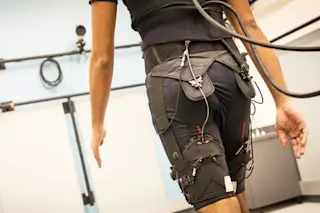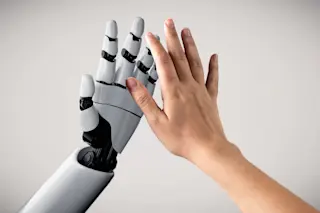The exosuit in action. (Credit: Harvard Biodesign Lab) Exosuits may seem the stuff of anime and superhero movies, but the technology is actually used for assisting those who might need a boost to go about their daily lives. These wearable technologies fit onto the body, usually the legs, much like a high-tech wetsuit. The exosuit is designed to provide supportive force to various points of the leg when needed, helping the user walk more easily and naturally. Now, new research out of Harvard University published in Science Robotics shows the potential for exosuits to adapt to their users in real-time, accounting for minor changes in gait as the user walks.
To give the most benefit, these wearable technologies have to be perfectly in sync with a user’s unique physiology and movement patterns. This is challenging, because every person has a unique gait that’s dependent on their anatomy, age, presence of ...














